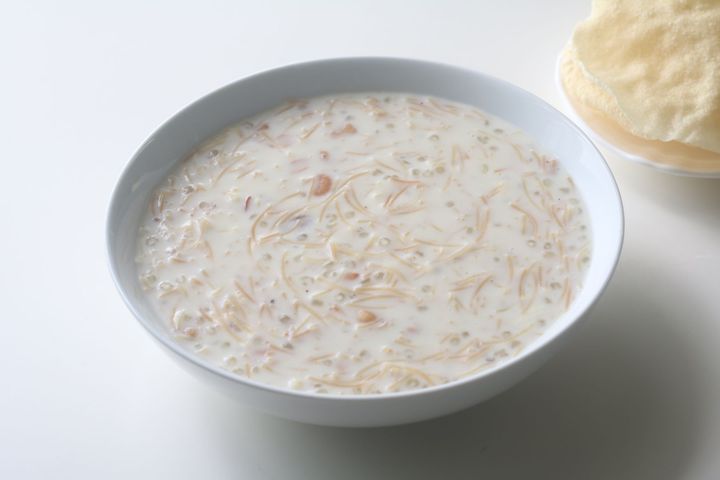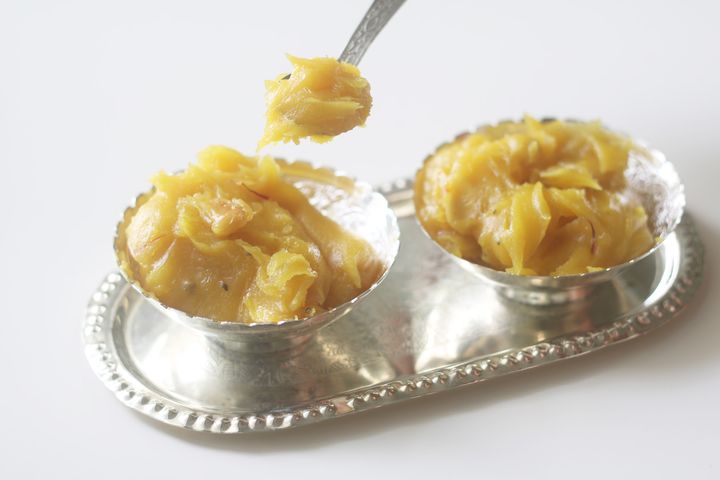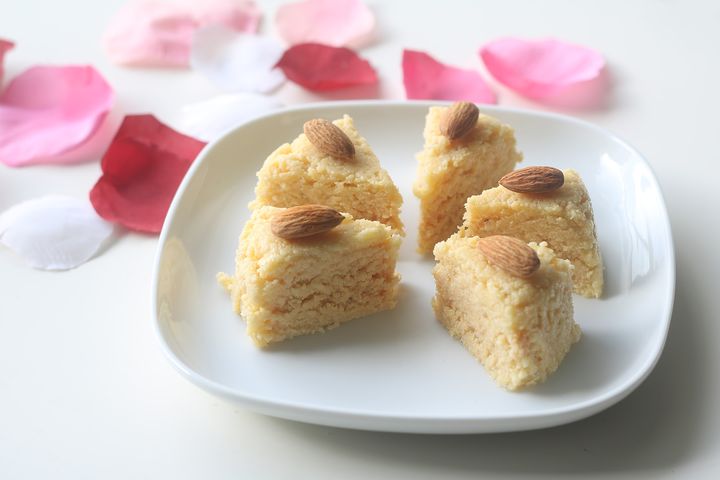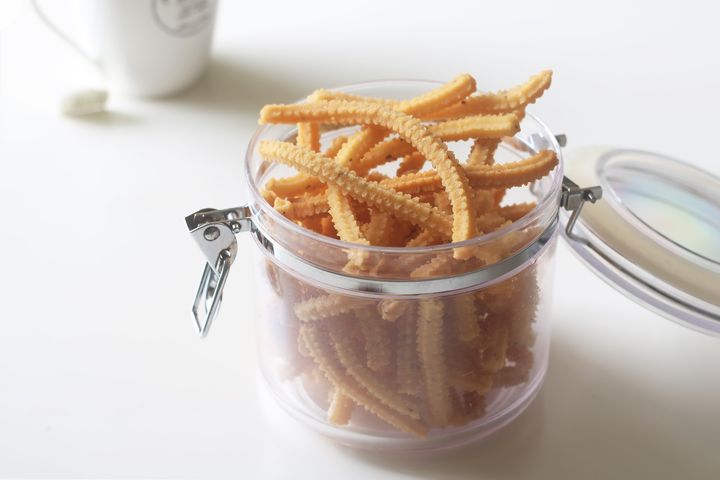Kozhukattai Recipe
Traditionally, people make this poornam kozhukattai by using channa dal. For a change, I prepared this kozhukattai recipe with green gram, as it is healthy and tasty.

Welcome to the Kozhukattai recipe, a traditional South Indian dish that is usually prepared during festivals and special occasions. This dumpling-like sweet or savory dish is made with rice flour and stuffed with a delicious filling. In this blog post, we will guide you through the step-by-step process of making Kozhukattai, a unique and flavorful dish that is sure to impress your family and friends. Whether you are a beginner or an experienced cook, this recipe is easy to follow and promises to bring the authentic flavors of South India to your kitchen. Let's get started!
What Is Kozhukattai Recipe?
- Kozhukattai, also known as Modak, is a popular South Indian sweet dumpling made during the festival of Ganesh Chaturthi. This delectable dish consists of a soft, steamed rice flour outer shell filled with a sweet and nutty stuffing. The combination of succulent coconut, moong dal, jaggery, and fragrant cardamom creates a unique and delightful flavor profile. The use of traditional Indian spices and seasoning adds a touch of authenticity to this beloved dish.
Why You'll Love Kozhukattai Recipe?
- Soft and Chewy Texture: The kozhukattai dough results in a soft and chewy texture, providing a delightful eating experience.
- Health Benefits of Moong Dal: The poornam filling is made with moong dal, which is a good source of protein and dietary fiber, making the kozhukattai a healthy snack or dessert option.
- Gluten-Free Option: Using idiyappam rice flour makes this recipe a gluten-free option, perfect for those with gluten sensitivities or allergies.
- Low-Calorie Snack: Kozhukattai is a low-calorie snack, making it a guilt-free indulgence for those watching their calorie intake.
- Steamed, Not Fried: This recipe calls for steaming the kozhukattai, making it a healthier cooking method compared to frying.
- Versatile Dish: This dish can be enjoyed as a snack, dessert, or even as a part of a festive meal, showcasing its versatility and appeal to a wide range of palates.
Ingredients for Kozhukattai Recipe
- Idiyappam Rice Flour: The main ingredient for the kozhukattai dough, the idiyappam rice flour provides a soft and smooth texture to the dough, making it perfect for shaping and steaming.
- Water: Essential for creating the kozhukattai dough, water helps bind the rice flour together while cooking and forming a smooth, pliable dough.
- Oil or Ghee: Adds richness and flavor to the kozhukattai dough, making it more aromatic and delicious.
- Salt: Enhances the overall taste of the dough and balances out the sweetness of the filling.
- Moong Dal: The primary ingredient for the poornam, moong dal adds a nutty flavor and a soft, creamy texture to the filling.
- Jaggery: Sweetens the poornam filling and adds a rich, caramel-like flavor to the kozhukattai.
How To Make Kozhukattai Recipe?
To make the delicious kozhukattai recipe, you will need to follow these simple steps:
Kozhukattai Dough:
- Dry roast the rice flour and then cook it with water, oil or ghee, and salt until it forms a ball. This is an important step to ensure the dough is smooth and easily moldable.
Poornam:
- Grind moong dal, coconut pieces, and cardamoms, then pressure cook the dal and mix it with jaggery and coconut. The addition of ghee and the cooking process is crucial for a flavorful poornam.
Kozhukattai:
- Use a kozhukattai mould to shape the dough ball, add the poornam stuffing, and carefully steam until fully cooked. The steaming process is essential for a perfect texture of the kozhukattai.
Following these steps will ensure that you make delicious and flavorful kozhukattai for you and your family to enjoy!

Serving Suggestions
- Pair with a savory side: Kozhukattai can be served with a delicious side of coconut chutney or tangy sambar to complement its flavors.
- Enjoy with a hot beverage: For a complete meal, enjoy your kozhukattai with a hot cup of South Indian filter coffee or masala chai.
- Serve with a sweet dish: To balance the flavors, serve the kozhukattai with a traditional Indian sweet dish like payasam or kesari.
- Accompany with pickles: Add a zing to your meal by serving the kozhukattai with a side of spicy mango or lime pickle.
- Pair with a vegetable dish: For a wholesome meal, serve the kozhukattai with a side of mixed vegetable curry or spicy potato fry.
- Garnish with herbs: To add freshness, garnish the kozhukattai with chopped coriander or curry leaves before serving.
Tips for Making Kozhukattai
Preparation Duration:
- The preparation time for making kozhukattai may vary, but it typically takes around 30 minutes to prepare the dough and the poornam, and another 15 minutes for steaming.
- It's helpful to plan ahead and soak the dal for 2 hours to ensure it cooks properly and is easy to grind.
Cooking Techniques:
- When making the kozhukattai dough, keep the heat low while mixing to avoid lumps and ensure the dough becomes like a smooth ball.
- While steaming, make sure to arrange the kozhukattais on a greased plate and steam cook for about 12 to 15 mins to ensure they are fully cooked.
Importance of Garnishing:
- Garnishing the kozhukattai with a sprinkle of grated coconut on top adds a nice finishing touch and enhances the presentation.
- You can also drizzle some ghee over the steamed kozhukattais before serving for added flavor and appeal.
By following these practical tips, you can make delicious kozhukattai with ease and ensure they look as good as they taste!
Variations for Kozhukattai Recipe:
- Filling Variations: Experiment with different fillings such as coconut and sugar, sesame and jaggery, or even a combination of coconut, jaggery, and roasted gram for a unique flavor.
- Flavor Variations: Try adding flavors like cardamom, nutmeg, or even a hint of saffron to the dough for a different taste profile.
- Shape Variations: Instead of the traditional dumpling shape, try making smaller bite-sized kozhukattais or even experiment with different shapes for a fun twist.
- Gluten-Free Variations: For a gluten-free option, substitute the idiyappam rice flour with gluten-free flour like sorghum or millet flour.
- Vegan Variations: To make this recipe vegan, replace the ghee with coconut oil or any other plant-based oil for a dairy-free option.
- Savory Variations: For a savory twist, skip the jaggery and coconut filling and instead, experiment with a spicy lentil or vegetable filling for a different take on this classic sweet snack.
How to Store Kozhukattai
Storing the Kozhukattai dough:
- Store the kozhukattai dough in an airtight container to prevent it from drying out.
- Keep it refrigerated to maintain its freshness for up to 2-3 days.
Storing the Poornam:
- After making the poornam, store it in an airtight container in the refrigerator.
- The poornam can be stored for up to a week if properly sealed to maintain its flavor and texture.
Storing the Kozhukattai:
- Once the kozhukattai is steamed, allow it to cool completely before storing.
- Place the kozhukattai in an airtight container and refrigerate for up to 2-3 days.
Proper storage of the key ingredients for kozhukattai is essential to keep them fresh and flavorful, ensuring that you can continue to enjoy this delicious snack for days to come.
Frequently Asked Questions (FAQs)
Can I use homemade rice flour for the kozhukattai dough?
- Yes, you can definitely use homemade rice flour for the kozhukattai dough if you prefer. Just make sure the flour is finely ground and has a smooth texture for the best results.
How can I adjust the sweetness of the poornam/stuffing?
- If you prefer a more or less sweet poornam/stuffing, you can adjust the amount of jaggery accordingly. Taste the mixture as you go along and add more or less jaggery to suit your preference.
Can I steam the kozhukattai without a steamer?
- If you don't have a steamer, you can use an idli pan or any vessel with a lid to steam the kozhukattai. Just make sure to add enough water to create steam and check periodically to ensure the kozhukattai are cooking evenly.
How do I know when the kozhukattai is fully cooked?
- To check if the kozhukattai is fully cooked, insert a toothpick or fork into the center of one of the kozhukattai. If it comes out clean, the kozhukattai is ready to be removed from the heat.
Can I make the poornam/stuffing ahead of time?
- Yes, you can prepare the poornam/stuffing ahead of time and store it in an airtight container in the refrigerator. When you're ready to make the kozhukattai, simply bring the poornam/stuffing to room temperature before using.
How long can I store the kozhukattai?
- Kozhukattai can be stored in an airtight container at room temperature for up to two days. If you'd like to store them for longer, you can refrigerate them for up to a week and reheat before serving.
Recipe Card
Kozhukattai Recipe 2020-08-15 03:48:34
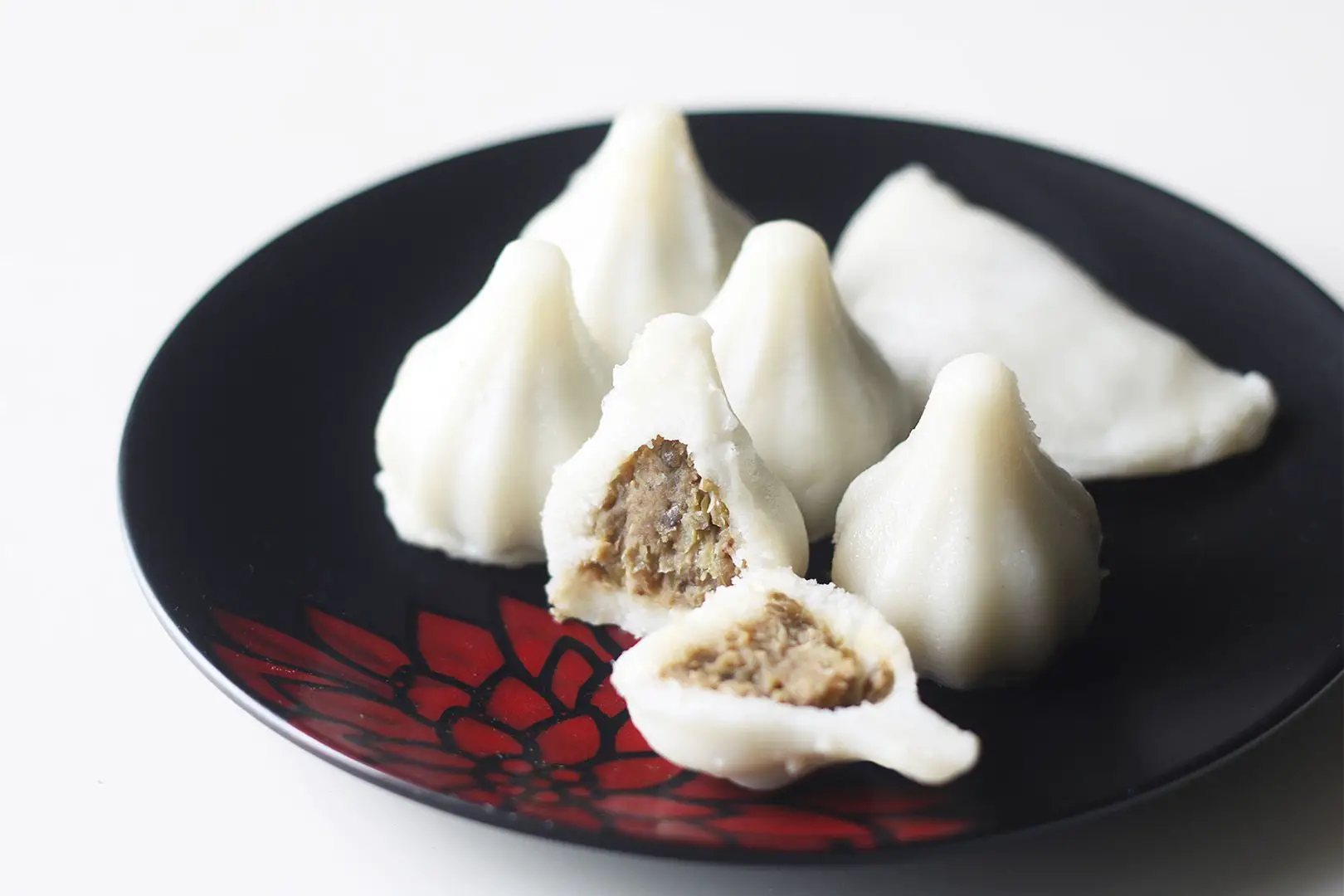
Kozhukattai Recipe
Serving Size: 10 kozhukattais
Prep Time: 30 minutes
Cook Time: 15 minutes
Total Time: 45 minutes
Ingredients
For Kozhukattai Dough:
- 1 cup store bought idiyappam rice flour
- 1&1/2 cups water
- 1 tsp or 1/2 tsp oil or ghee
- less than 1/2 tsp salt
For Poornam:
- 1/2 cup (100 grams) moong dal
- 1/3 cup coconut pieces
- 3 cardamoms
- 1/3 cup powdered jaggery
- 2 tsp ghee
Instructions
How to make kozhukattai dough:
- Dry roast the rice flour for one minute or until the flour becomes hot over low heat. Remove from the heat and keep it aside.
- Then heat a pan with water, over medium heat. When the water starts to boil, add oil or ghee, salt and rice flour. (reduce the heat to low). Stir continuously with the back of the ladle to avoid lumps. Cook until the dough becomes like a ball. Then remove from the heat, transfer to a bowl and let it cool for some time. Now grease your hand with oil.
- Once the dough is cooled, knead once until a smooth dough. and keep it aside.
How to make Poornam:
- Wash and soak the dal for 2 hours. Meanwhile, place the coconut pieces and the cardamoms in a mixie jar and grind it coarsely as shown in the picture. Then pressure cook the dal for two whistles with one cup of water. Turn off the heat and let the steam go all by itself. Open the cooker and set aside. Cool and drain the water (if any) completely. ( don’t waste that water, use it for soup or Kuzhambu)
- Place the dal in a mixie jar with jaggery and grind into little coarsely. Meanwhile, heat a pan with 2 tsp of ghee. When the ghee melts, add grated coconut and cardamom mixture and stir fry until it becomes dry. Switch off the heat and then add the dal jaggery mixture and a pinch of salt. Mix well until well combined. Now the Poornam is ready.
How to make kozhukattai:
- First, grease the kozhukattai mould with oil or ghee. Then close or lock the mould. Now Place the dough ball in the cavity of the mould and press the dough along the surface of the mould, so that a space is made and remove the excess dough from the top and sides of the mould. Then place the poornam/stuffing in that space and then cover the top with small piece of dough. Now gently open the mould and remove the kozhukattai from the mould carefully as shown in the video.
- Now grease your hand with oil, place a ball of dough on your palm and flatten it into a small circle until 8 cm in diameter. Then place a ball of stuffing in the center or at one side and fold it with other side and press the corners properly. Repeat the same process for remaining flour balls also.
- Meanwhile, heat an idli pan or steamer with enough water. Arrange all these kozhukattais on a greased idli plate or on a steam plate and steam cook for about 12 to 15 mins or until fully cooked. Then remove from the heat and let it cool for some time and enjoy!
By Santhi Therese
The Indian Claypot
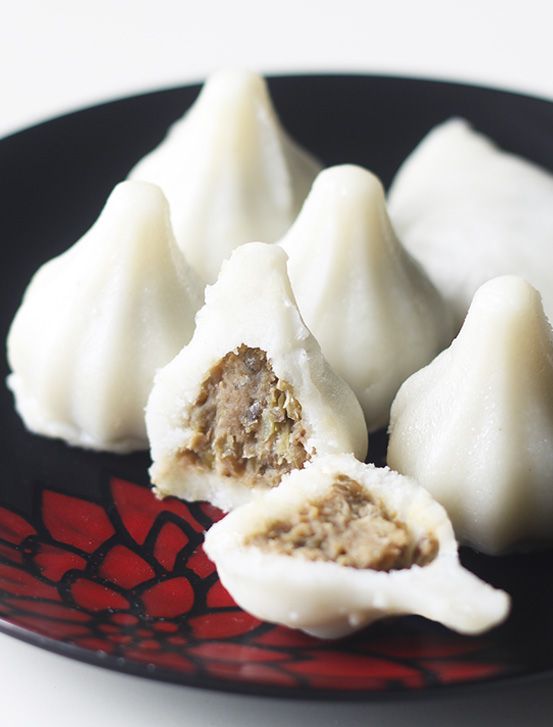
Step-By-Step Instructions:
For Dough:
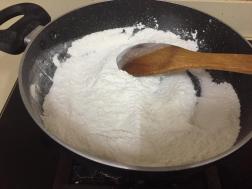
Dry roast the rice flour for one minute or until the flour becomes hot over low heat.
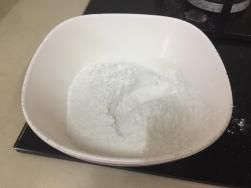
Remove from the heat and keep it aside.
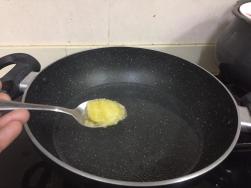
Then heat a pan with water, over medium heat.
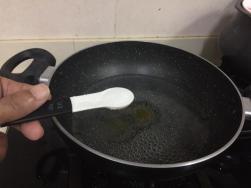
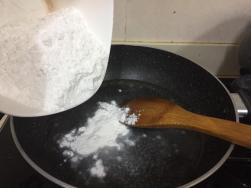
When the water starts to boil, add oil or ghee, salt and rice flour.
(reduce the heat to low).
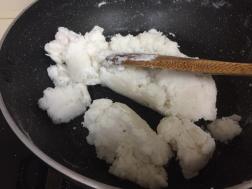
Stir continuously with the back of the ladle to avoid lumps. Cook until the
dough becomes like a ball.
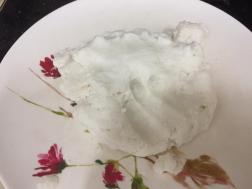
Then remove from the heat, transfer to a bowl and let it cool for some time.
Now grease your hand with oil. Once the dough is cooled,
knead once until a smooth dough. and keep it aside. Now the dough is ready.
Divide the dough in to small balls.
For Poornam:
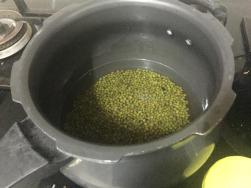
Wash and soak the dal for 2 hours.
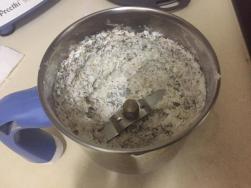
Meanwhile, place the coconut pieces and the cardamoms in a mixie jar
and grind it coarsely as shown in the picture.
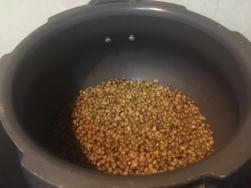
Then pressure cook the dal for two whistles with one cup of water.
Turn off the heat and let the steam go all by itself.
Open the cooker and set aside. Cool and drain the water (if any)
completely. ( don’t waste that water, use it for soup or Kuzhambu)
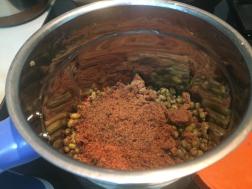
Place the dal in a mixie jar with jaggery
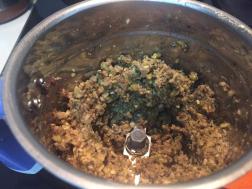
and grind into little coarsely.
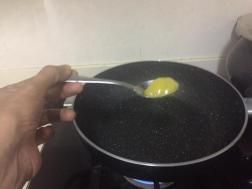
Meanwhile, heat a pan with 2 tsp of ghee.
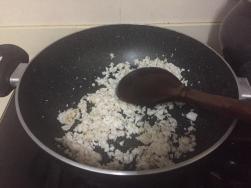
When the ghee melts, add grated coconut and cardamom mixture
and stir fry until it becomes dry. Switch off the heat
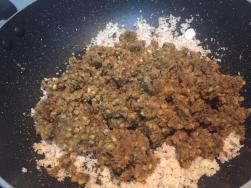
then add the dal jaggery mixture and a pinch of salt.
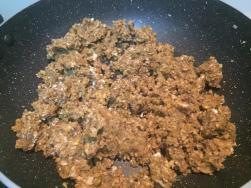
Mix well until well combined. Now the ‘Poornam’ (stuffing) is ready.
How to make kozhukattai by using kozhukattai mould:
First, grease the kozhukattai mould with oil or ghee. Then close or lock the mould.
Now Place the dough ball in the cavity of the mould and press the dough along the surface of the mould, so that a space is made and remove the excess dough
from the top and sides of the mould. Then place the poornam/stuffing in that space and then cover the top with small piece of dough. Now gently open the mould and remove the kozhukattai from the mould carefully as shown in the video.
Another method:
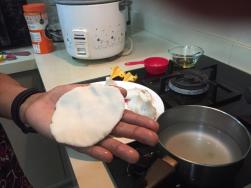
Now grease your hand with oil, place a ball of dough on your palm
and flatten it into a small circle until 8 cm in diameter.
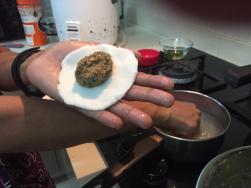
Then place a ball of stuffing in the center or at one side
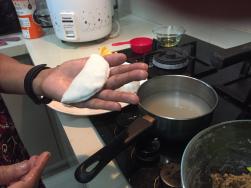
and fold it with other side and press the corners properly.
How to Steam the Kozhukattai:
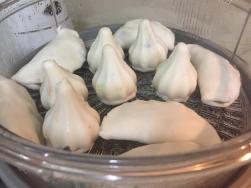
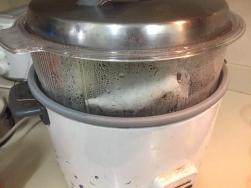
Meanwhile, heat an idli pan or steamer with enough water. Arrange all these
kozhukattais on a greased idli plate or on a steam plate and steam cook
for about 12 to 15 mins or until fully cooked.
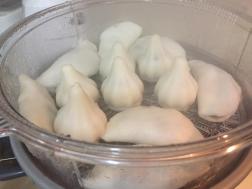
Then remove from the heat and let it cool for some time and enjoy!
You may also like my other Diwali Sweets posts and recipes like Semiya Payasam Recipe, Ashoka Halwa /Pasi Paruppu Halwa, Milk Cake Recipe, Fried Gram Murukku Recipe, Mango Sago Dessert, Restaurant Style Rava Kesari Recipe, Badusha Recipe, Kasi Halwa Recipe / White Pumpkin Halwa Recipe, Sweet Shakarpara Recipe / Kalakala / Diamond Biscuit, Moong Dal Murukku, Traditional Mysore Pak Recipe, Baked Murukku /Chakli, Green Gram Payasam/Kheer, Kara Boondi Recipe, Moong Dal Susiyam, South Indian Mixture Recipe, Kara Sev Recipe, Sweet Boondi, Milk Halwa, Rava Ladoo Recipe .
